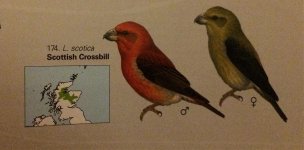McMadd
You should see the other bloke...
Guy
I guess Birdlife doesn't need the money. Anyway, I'm happy to extend the offer to the publication of the book. So if there is a coherent explanation for the retention of Scottish Crossbill in the book, based on the Tobias et al. criteria, then I'll still pay up.
cheers, alan
Mine's en route via UPS so we'll soon know...







